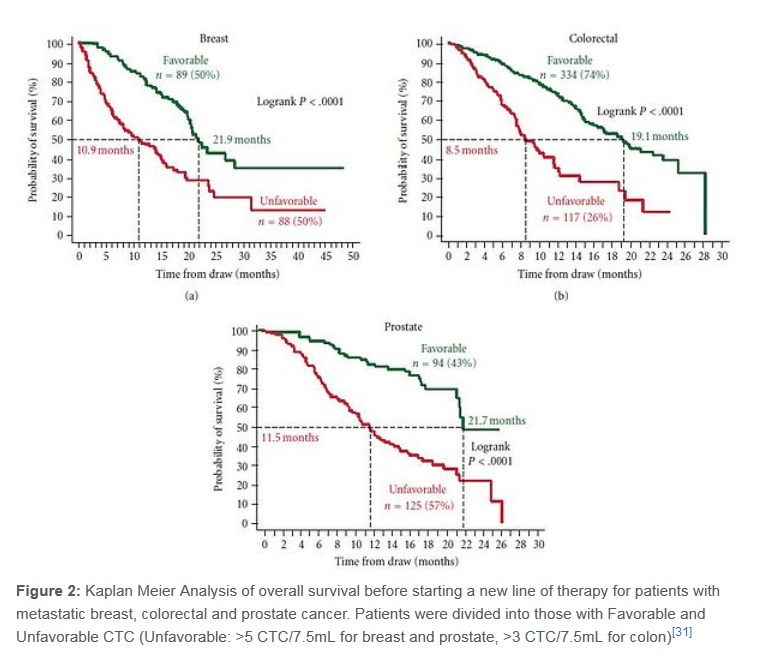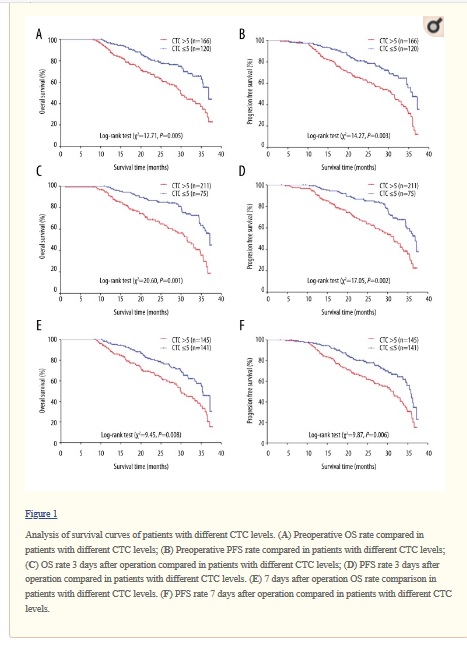(Total Views: 8819)
Posted On: 12/03/2019 8:56:39 AM
Post# of 157807
Yes, ctc of 5 is an inflection point on survival. So my question, what about ctc=0.... wow, just amazing.
A feb post,
https://investorshangout.com/post/view?id=5344182
More CTC. One reason these breast cancer studies look at patients with ctc>5
Unfavorable Definition for these graphs:
Breast and prostate CTC >5
Colon CTC>3
For example, with breast cancer with ctc>5, 10.9 months after getting ctc numbers 50% had died versus 50% survival was 21.9 for ctc<5

From your link, very similar results on ctc >5 vs ctc <=5

From an earlier post of mine
https://investorshangout.com/post/view?id=5338073
Some papers on CTC
https://www.nature.com/articles/srep43464
Abstract
https://academic.oup.com/jnci/article/106/5/dju066/2607122
Circulating Tumor Cells Predict Survival in Early Average-to-High Risk Breast Cancer Patient
This is from November 2018, a book chapter written about CTC
https://www.researchgate.net/profile/Malgorza...ion_detail
A feb post,
https://investorshangout.com/post/view?id=5344182
More CTC. One reason these breast cancer studies look at patients with ctc>5
Unfavorable Definition for these graphs:
Breast and prostate CTC >5
Colon CTC>3
For example, with breast cancer with ctc>5, 10.9 months after getting ctc numbers 50% had died versus 50% survival was 21.9 for ctc<5

From your link, very similar results on ctc >5 vs ctc <=5

From an earlier post of mine
https://investorshangout.com/post/view?id=5338073
Some papers on CTC
https://www.nature.com/articles/srep43464
Abstract
Quote:
Whether circulating tumor cells (CTCs) can be used as an indicator of treatment response in breast cancer (BC) needs to be clarified. We addressed this issue by a meta-analysis. PubMed, EMBase and Cochrane library databases were searched in June 2016. Effect measures were estimated as pooled risk ratio (RR), odds ratio (OR) or mean difference by fixed- or random-effect models, according to heterogeneity of included studies. In total, 50 studies with 6712 patients were recruited. Overall analysis showed that there was a significant reduction of CTC-positive rate (RR = 0.68, 95% CI: 0.61–0.76, P < 0.00001) after treatment. Subgroup analyses revealed that neoadjuvant treatment, adjuvant treatment, metastatic treatment or combination therapy could reduce the CTC-positive rate, but surgery could not; moreover, the reduction was only found in HER2+ or HER2- patients but not in the triple-negative ones. Reduction of CTC-positive rate was associated with lower probability of disease progression (OR = 0.54, 95% CI: 0.33–0.89, P = 0.01) and longer overall survival period (mean difference = 11.61 months, 95% CI: 8.63–14.59, P < 0.00001) as well as longer progression-free survival period (mean difference = 5.07 months, 95% CI: 2.70–7.44, P < 0.0001). These results demonstrate that CTC status can serve as an indicator to monitor the effectiveness of treatments and guide subsequent therapies in BC.
https://academic.oup.com/jnci/article/106/5/dju066/2607122
Circulating Tumor Cells Predict Survival in Early Average-to-High Risk Breast Cancer Patient
This is from November 2018, a book chapter written about CTC
https://www.researchgate.net/profile/Malgorza...ion_detail

